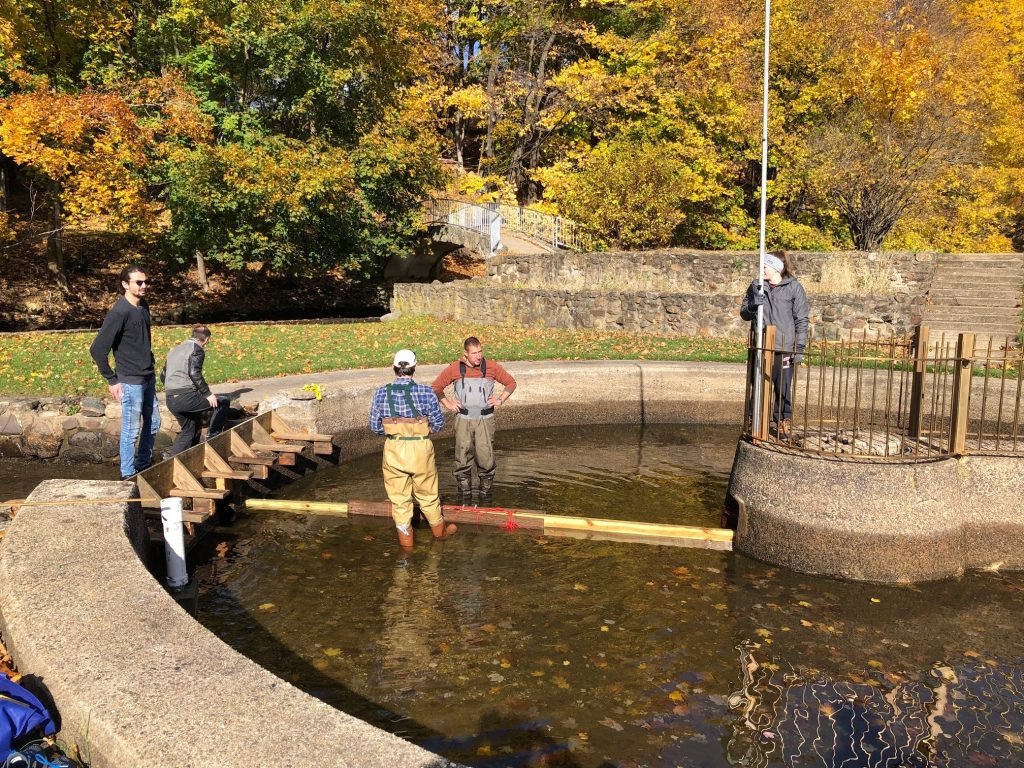
ROXBURY — The 96-year-old fountain in Hopatcong State Park, where local families once cooled off during the hot summer months, has sat dormant for far too long.
It was shut down for maintenance in the 1990s and remained that way for the last two decades.
It will soon return to life with the help of a Morris County historical grant and engineering students who will work side-by-side with professionals.
In September, Stevens Institute of Technology students and professionals from the Cranford-based Connolly & Hickey Historical Architects began the work to study the fountain’s issues and brainstorm possible solutions. On Nov. 16, the group gathered at the fountain to test theories and collect data for additional testing.
The students and professional architects are working on the project in partnership with the Lake Hopatcong Historical Museum. In July, the Morris County commissioners approved a $36,800 historic preservation grant to renovate the fountain.
“While there is still much work ahead, this iconic element of Lake Hopatcong’s past is hopefully on its way to once again being an important part of our community,” said Marty Kane, the museum’s president and chair of the Lake Hopatcong Foundation.
The fountain was built in 1925 and operated regularly until 1988.
Lake officials briefly turned the fountain back on over the summer to check the extent of the repairs needed. Despite discovering a small leak and a possible cracked pipe, Kane said at the time that the test was “a pleasant surprise.”
Renovation plans include an exterior restoration, repair of the plumbing system and addressing the hydrology and filtration of water from Lake Hopatcong to the fountain. As part of the fight to address algae blooms at lakes around the area, Roxbury Mayor Bob DeFillippo recently said the state park was hooked up to Roxbury’s sewer line in late spring.
“We’re very excited to see the fountain fully restored,” he added at the time.
The fountain was built as a way to fix the social and political divide in the region after the Morris Canal, once the commercial lifeline for transporting coal and other goods across North Jersey, was closed. Designed by Cornelius C. Vermeule, the consulting and directing engineer in charge of the dismantling of the Morris Canal, a 24-inch pipe was placed in the dam leading to the fountain. The fountain was put in the center of a circular concrete basin 40 feet in diameter to catch the falling water.
“Vermeule’s calculations determined that this flow of water into the Musconetcong River would be equivalent to the amount supplied by the lake before the original dam was built and would lower the lake probably not more than 6 inches or a foot during the season,” Kane recently said. “As a side benefit to this measuring tool, Vermeule designed the fountain so that the water would spout up to a height of about 12 feet, and he purposely placed it in a central position visible from the nearby road.”
